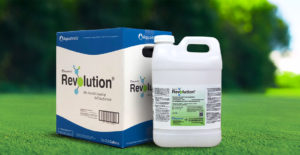 Golfers grade superintendents and greenkeepers on turf quality and surface playability. The primary criteria are color, density, uniformity, texture, and firmness. It can be challenging to keep up with all these factors when resources must be saved throughout the golf season, but our goal is to help equip you with the necessary information.
Golfers grade superintendents and greenkeepers on turf quality and surface playability. The primary criteria are color, density, uniformity, texture, and firmness. It can be challenging to keep up with all these factors when resources must be saved throughout the golf season, but our goal is to help equip you with the necessary information.
Minimizing water usage on the golf course is desirable from an environmental perspective but also from an economic and functional point of view. Based off past performance, surfactants are a practical tool to maintain all variables while staying rational with water proportions.
Wetting agents provide better chemical and irrigation efficiency to promote healthier turf and roots, while still maintaining playability. While fighting off disease and insect pressure, you’re creating a healthier environment in the soil profile.
Points of Turf Uniformity
Distribution uniformity measures the consistency of water dispersion. Since irrigation efficiency is directly associated to the volume of water needed to irrigate a course, the lower productivity from the system, the more water required.
Higher uniformity enhances turf consistency and allows for greater precision. Wetting agents come into play by balancing the distribution of moisture in the soil, making dry areas wetter and wet areas drier. Overall, this effect can improve conservation by decreasing water usage and ultimately providing a more consistent playing surface.
The ideal surfactant prevents development of water-repellent soil conditions and maximizes the uniformity of soil water content within the rootzone. This reduces the irrigation water needed achieve comparable visual appearance to well-watered turf grass.
By improving moisture flow, surfactants can also maintain turf density. This has proved to be the most effective way to reduce runoff volume which, combined with increased infiltration, is a primary form of water quality stability.
Surface Firmness
Golfers desire a firm surface, and those conditions have been the foundation for ideal playability ever since the game was invented. It can be achieved by creating root zones from sand and maintaining a limited amount of water in those regions.
Surfactants do their part by providing a firmer playing surface following a significant rainfall and helping promote uniform wetting of turf surfaces. Wetting agents have demonstrated that they can impact firmness by allowing increased drainage and movement of water.
The Answer? Revolution
 Aquatrols’ Revolution allows you to get your greens up to speed as quickly as possible. Revolution helps to balance air and moisture between the existing rootzone and top-dressing material, while providing more consistent moisture content and nutrient availability across the profile. Plant roots have more reliable moisture access and improved nutrient use efficiency. It also assists in building healthy turf from the ground up, and works to effectively manage soil moisture to fully employ your soil’s capacity for water distribution and storage.
Aquatrols’ Revolution allows you to get your greens up to speed as quickly as possible. Revolution helps to balance air and moisture between the existing rootzone and top-dressing material, while providing more consistent moisture content and nutrient availability across the profile. Plant roots have more reliable moisture access and improved nutrient use efficiency. It also assists in building healthy turf from the ground up, and works to effectively manage soil moisture to fully employ your soil’s capacity for water distribution and storage.

Comments are closed.